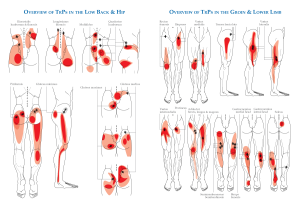Why Back Pain Could Be Related To A Quadriceps Issue

Category: | Author:
Many systems within our body are interconnected and work in relation to one another in order to help movement go as planned. However, this interconnectedness also means that a problem in one area can oftentimes lead to an issue in a nearby area, and that’s especially true with our spine. For example, a pinched nerve in our spinal column can lead to discomfort in our arms and legs. Conversely, a problem with your quadriceps can oftentimes lead to pain in your lower back. In today’s blog, we explore why untreated quadriceps tightness can cause problems for your spine.
The Connection Between Your Quads And Your Spine
Your quadriceps muscles are located on the front of your thigh, and their main functions are to extend the leg at the knee joint and flex your thigh at the hip joint. They also provide some extra stability to the knee by holding your patella inside a groove in your femur. They are large and strong muscles, but if they are chronically tight, they can cause problems for your spine in two main ways.
- Pelvic Tilt – As the name subtly implies, the quadriceps are a group of four distinct muscles; the rectus femoris, the vastus lateralis, the vastus intermedius and the vastus medialis. Your rectus femoris muscle attaches to your pelvis at the anterior superior iliac spine, or ASIS. It has to cross over your hip joint in order to make this connection, and if your quadriceps or your rectus femoris gets tight, it can pull on your hip. This causes the pelvis to shift into an anterior tilt position, and when your pelvis is tilted forward, it can cause your spine to move into a more arched position. A more significant arch can put excessive stress on lower back muscles, leading to discomfort and pain.
- Weakened Hamstrings – Tight quadriceps muscles can also contribute to back pain because of the impact they can have on your hamstrings. Your quadriceps and your hamstrings work in unison to help provide stability to the knee, but if your quadriceps are tight, your hamstrings will likely be overstretched as they work to compensate for their tightness. Prolonged stretching of your hamstrings can lead to muscle fatigue and weakness, making it harder for them to provide ideal support to the knees, pelvis and lower back.
If you want to prevent quadriceps tightness and hamstring weakness from causing problems for your spine, it’s imperative that you don’t overlook these areas before, during and after exercise. Be sure to take time to stretch your quads and your hamstrings prior to athletic activity so that they aren’t shifting your natural pelvic angle during activity. You should also stretch these areas after physical activity, as muscles can become overly contracted following a strenuous workout. Light stretching can help them remain loose as they transition to a less active state.
Finally, you’ll also want to spend some time strengthening your hamstrings and your quads with an exercise or workout routine so that they can better handle the stress you put on them. This will also help them provide more stability to the pelvis and knee areas.
If you’re wondering if quadriceps tightness or hamstring weakness are contributing to your back pain, or you have questions about a different spinal issue, reach out to Dr. Sinicropi and the team at The Midwest Spine & Brain Institute today at (651) 430-3800.
Related




